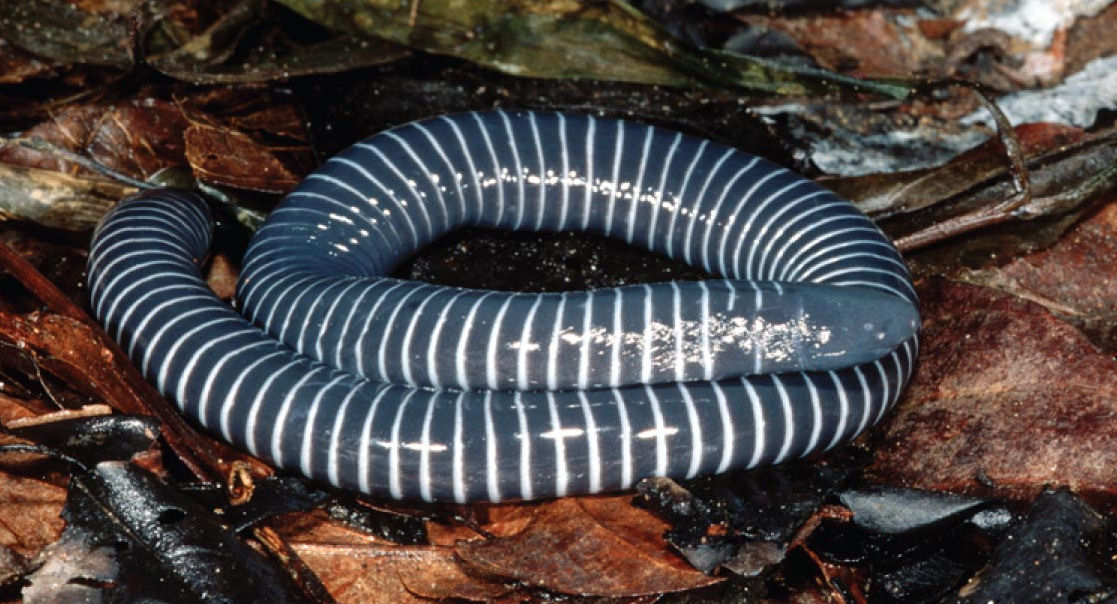Scientific classification: Caecilians make up the order Gymnophiona, which contains six families: Rhinatrematidae, Ichthyophiidae, Uraeoptyphlidae, Scolecomorphidae, Caeciliidae, and Typhlonectidae. The largest caecilian is classified as Caecilia thompsoni, and the smallest is Idiocranium russelli.
Introduction
The Caecilian is a wormlike amphibian that lacks legs and typically lives underground. Caecilians resemble earthworms except for a key difference caecilians have backbones and are therefore vertebrates, caecilian amphibian while earthworms are invertebrates and lack this structural support. Caecilians spend most of their lives burrowing in soft earth and surface only when rain flushes them out. This underground lifestyle makes them difficult to observe, and many aspects of their lives remain mysterious to scientists.
Caecilians inhabit tropical and warm temperate regions in South American, southern Asia, the Malay Archipelago, the Philippines, the Seychelles Islands, and parts of Africa. Most caecilians live in damp soil, but one family group lives in rivers and streams.
Characteristics
There are 163 known caecilian species, which vary widely in size. The largest known species, found in Colombia, measures 150 cm (59 in) long. In contrast, the smallest caecilian, found in West Africa, measures only 7 cm (2.75 in). Caecilians have muscular bodies encircled by numerous skin folds, or rings, called annuli, which may play a role in locomotion. They are usually drab in color, although some species are brightly colored and marked by stripes, caecilian amphibian. The inner layer of caecilian skin contains numerous glands. Some of these produce mucus, which helps keep the skin from drying out, and others secrete poisons, which serve as a defense against predators. Caecilians are unusual among amphibians in that the skin of some species contains patches of scales that are similar to the scales of fish.
Adaptation
Caecilians are well adapted for life underground. Their powerful, bony skulls make it easy for them to dig with their heads, which they use like battering rams. They lack external ears and are entirely or partially blind because their eyes are covered with skin, bones, or both. To detect smells and tastes from their surroundings, they rely on a pair of retractable sensory organs called tentacles, which are located in a groove between their eyes and upper lip. Caecilians have several rows of sharp teeth that they use for capturing small animals such as earthworms, termites, and beetles. In addition, caecilian amphibian they occasionally eat small frogs and lizards. Caecilians typically approach their prey slowly and then quickly seize it with their powerful jaws. Caecilians, in turn, are often preyed upon by snakes, and in the Seychelles Islands, they are eaten by chickens and pigs.
Reproduction
Caecilians differ from most other amphibians in that their reproduction always involves internal fertilization, meaning that the egg and sperm join within the female’s body. Males use a body structure called a phallodeum to release sperm inside an opening in the female’s body called the cloaca. Among about half of the caecilian species, the eggs develop to maturity within the mother’s body. This maturation process involves metamorphosis the transition from a fishlike body to an adult form. Among many of the other species, caecilian amphibian females lay their eggs underground near streams, and the hatchlings wiggle their way to the water, where metamorphosis gradually occurs. Among other egg-laying species, the embryos undergo metamorphosis inside of the eggs, and the hatchlings emerge with adult body structures.

